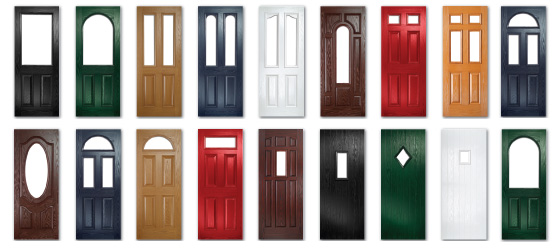We'll start off with a corporation. This corporation is publicly owned, i.e. its stock is publicly traded on exchanges. Like any publicly owned company, it already serves some useful economic role and is profitable. For concreteness, let's say it's a door company called Front and Rear Entry Doors (FRED for short). Clearly, this is all straightforward (though not necessarily easy) within the standard legal framework.
 |
| FRED reserve assets |
1. FRED will no longer issue either bonds or dividends. It will borrow only by issuing new stock, and it will distribute earnings only by buying back stock. (Issue and buyback is handled by the finance department, internally called the "FRED Open Market Committee" or "FOMC".)
2. FRED introduces a system for transferring shares of its own stock between other individuals and companies (including itself), quickly and easily. (They call it "FREDwire".)
3. FRED will accept its own stock as payment for goods and services, and its employees and contractors have the option of being paid in stock.
These are the key pieces for Front and Rear's stock to begin functioning as money. Technically, not all of these are necessary. (2) could be implemented by any third party (i.e. a clearing house). (1) and (3) are really equivalent, since the company or its employees/contractors can immediately trade any revenue for stock in the open market. But practically, these steps would spur people to start thinking of and using the stock as a currency in its own right.
Let's say this goes on for a while. The FRED sells lots of doors, and starts expanding into shutters. Many employees and contractors seek payment in stock, the company's revenue drives aggressive buybacks, and the stock price generally fares well. Local shopping centers begin to carry gift cards for FRED stock (called "FRED notes" after the cute messages on the cards). In fact, things go so well that some new home buyers want to finance their doors and shutters by borrowing shares of FRED's stock with which to make their purchases.
Along comes some enterprising fellow who says "Hmmm. There's a bunch of home buyers looking to borrow FRED stock, and there's a bunch of contractors with their FRED stock savings just sitting around. What if I pay the contractors some interest to lend me their stock, and then loan that out to the home buyers at a slightly higher rate of interest?" So begins the FRED home loan bank.
The FRED banking business goes well, competitors spring up, and soon there is a dynamic FRED banking business. The banks take in stock, for which they issue interest-bearing "deposits". They then lend out most of the stock to borrowers. Loans quickly extend beyond home loans into business loans, inventory finance, and short-term loans to other banks.
The short term interbank loans are of particular interest, since they facilitate deposit withdrawal. When a customer wants to withdraw a deposit, they are always paying it to someone else, who in turn typically deposits it in their own FRED bank. So whenever one FRED bank loses deposits, another bank gains deposits. Typically, the bank which lost deposits will borrow some FRED stock from the bank which gained deposits. In this way, every bank only needs to keep a very small amount of FRED stock on "reserve" to cover deposit withdrawals. All the rest of the FRED stock can be loaned out to consumers and businesses for a profit.
Everything goes well right up until it doesn't. A bad month for FRED mortgage defaults causes interest rates to rise. One bank, Continental Freebank of Illinois, had made many long-term mortgages at low interest rates in previous years. Unfortunately, Freebank is low on deposits, and has to borrow funds using interbank loans. As rates increase, those short-term interbank loans grow more expensive, until eventually the interest on the short term loans is almost as high as the long-term mortgages Freebank had issued. Between the interest rate hit and mortgage defaults, Freebank is losing money.
Fearing the loss of their deposits, Freebank's customers panic and withdraw their stock deposits. As Freebank's deposits dwindle, it is forced to take on even more short-term loans at high interest to pay off its customers. Soon other banks begin to worry, and they refuse to lend to Freebank. With customers clamoring for deposits and nobody willing to loan, Freebank's stock pile runs out. Deposits can no longer be paid, and Freebank goes into bankruptcy.
Shocks run through the system. Some of Freebank's customers' deposits are lost. All the other banks which had made short-term loans to Freebank now also have losses on their books. Panic sets in among consumers, realizing that further bank failures could threaten their own deposits. Banks worry that their depositors will also withdraw their stock, causing further failures. Disaster looms.
TO BE CONTINUED...
Will the catastrophic bank failures run through the the entire Front and Rear Entry Door banking system? Will the Freebank era come to an end? Can the system be saved without introducing a new legal framework? Tune in next time for "How to Build a Banking System, Part 2: A New Hope".
No comments:
Post a Comment